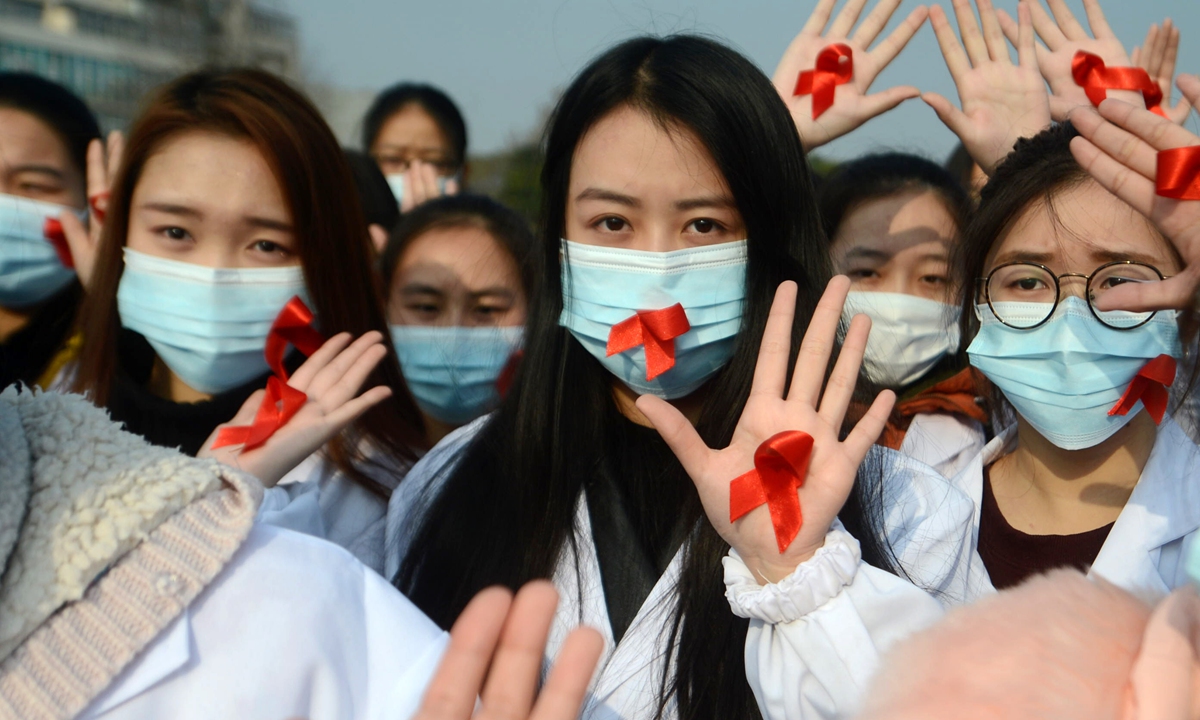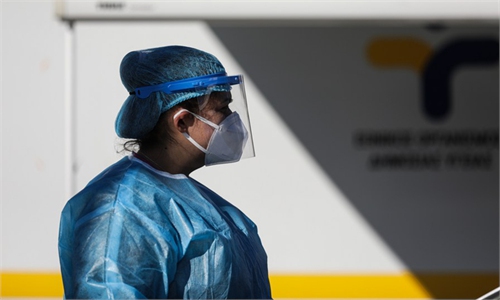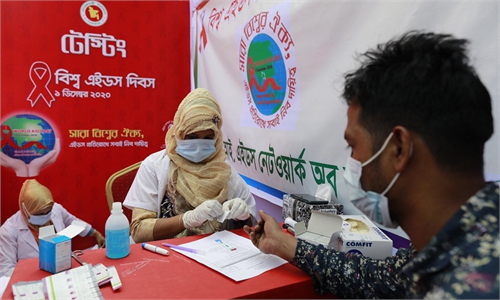HIV infection rates not slowing fast enough
Goal to eradicate disease unlikely to be reached by 2030: UNAIDS data

Students of Yangzhou University in East China's Jiangsu Province, put red ribbon on their hands as an appeal to eliminate social discrimination against HIV patients on World AIDs Day. Photo: cnsphoto
Infection rates of HIV are not slowing fast enough to reach the goal of eradicating AIDS by 2030, a report by the United Nations group to fight the disease said Monday.Published two days ahead of World AIDS Day, the report by the Joint United Nations Programme on HIV/AIDS said shortcomings in the pandemic response can also be seen in the fight against the decades-old disease.
"Many of these missing pieces to fight HIV are also allowing the COVID-19 pandemic to continue and leaving us dangerously unprepared for pandemics of the future," said UNAIDS executive director Winnie Byanyima in a statement.
In June, UNAIDS set new targets to reach by 2025: bringing HIV services to 95 percent of those who need them; reducing annual HIV infections to fewer than 370,000; and reducing AIDS-related deaths to fewer than 250,000 by 2025.
But the report said the world is off-track to meet those goals.
"UNAIDS data show that the curves of HIV infections and AIDS-related deaths are not bending fast enough to end the pandemic," it said.
The report highlighted five urgent Global AIDS Strategy priorities it said should be funded and implemented globally "for pandemic prevention, preparedness and response."
They include access to preventative equipment like condoms and clean needles, as well as support for community-based health services.
Marginalized people continue to be the most at risk for HIV infection, including gay men and other men who have sex with men, sex workers, people who use drugs by injection, and prisoners.
A new analysis suggests countries may be under-reporting the size of at-risk populations and highlights the need for better data, it said.
COVID-19 has affected the fight against AIDS differently in different countries but that HIV screening rates had slowed almost uniformly.
But many of same measures the world could take to improve "pandemic preparedness" could also help eradicate HIV and AIDS.
UNAIDS said the disease could kill 7.7 million people between 2021 and 2030 if the availability of preventative measures and treatments remain at 2019 levels.
If, however, the international strategy is put in place and 2025 goals are met, UNAIDS said some 4.6 million lives could be saved over the course of the decade.
AFP


